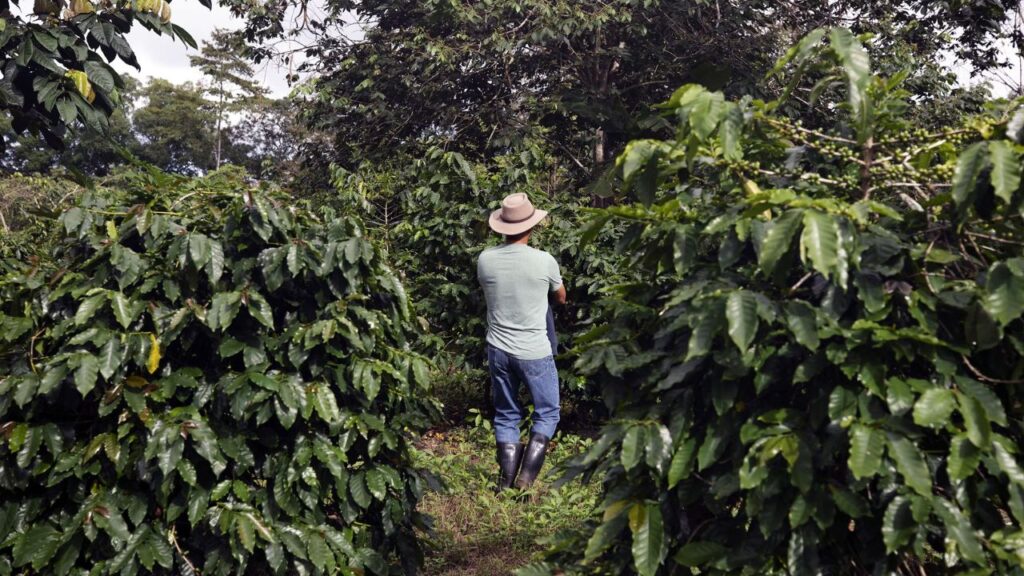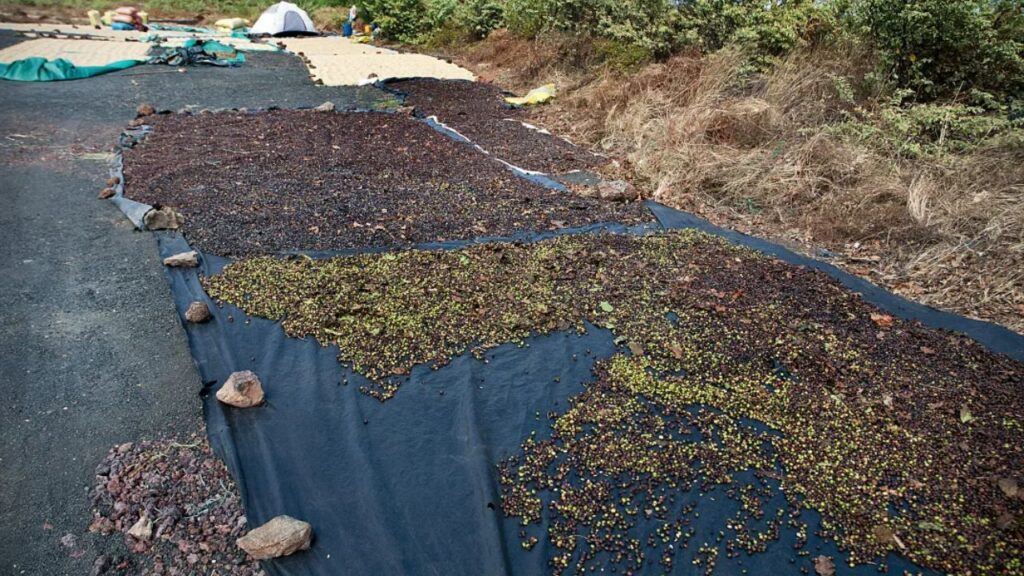Galapagos Coffee: History, Flavors & Brewing Tips
The Galapagos Islands are famous for their breathtaking scenery and remarkable wildlife, but they also boast a hidden gem: Galapagos Coffee. This unique coffee is grown in a pristine environment, resulting in flavors that are as extraordinary as the islands themselves.
Here, we will explore the rich history of Galapagos Coffee, and its distinctive taste profiles, and provide essential brewing tips to enhance your coffee rituals. Let’s discover a new favorite brew that connects you to one of nature’s most remarkable locations.
History of Coffee in Galapagos
The introduction of coffee to the Galapagos Islands by Manuel J Cobos has created a unique niche in the global coffee market. It wasn’t a massive export, the cultivation of high-quality beans in the volcanic soil.

It has allowed local farmers to thrive, especially with the recent trend toward artisan and premium coffees. This shift aligns perfectly with the growing consumer demand for exceptional flavors and sustainable sourcing.
Café Galapagos stands out as a testament to this evolution, showcasing the islands’ rich coffee heritage. By focusing on smaller lots of carefully cultivated beans, these farmers preserve a piece of their history and contribute to a more diverse coffee landscape.
As more people seek out unique and flavorful coffees, the Galapagos Islands are poised to carve out their distinctive place in the global coffee scene.
Coffee Farming in the Galapagos Islands
Coffee farming in the Galapagos Islands is a unique endeavor due to the islands’ distinct ecosystem and conservation efforts. The volcanic soil and high-altitude climate create ideal conditions for growing high-quality Arabica coffee. Let’s discuss it in detail.
Coffee-Growing Regions
San Cristobal and Santa Cruz are the two main islands in the Galapagos known for coffee cultivation. San Cristobal, being larger, benefits from its certification as a sustainable source, which is crucial for eco-conscious consumers.
Santa Cruz, with its elevated terrain, also produces high-quality coffee beans that rival those of its neighbor. Both islands contribute uniquely to the rich coffee culture of the Galapagos, showcasing the diversity of flavors and sustainable practices in this unique ecosystem.
Farming & Harvesting
Ecuador coffee beans, particularly from the Galapagos Islands, thrive in unique conditions that differ from traditional coffee-growing regions. The low elevation, combined with a favorable climate and volcanic soil, allows for the cultivation of Arabica beans, which typically require higher altitudes.

Harvesting is a labor intensive process that occurs from November to late February, primarily done by hand to ensure quality. The beans often undergo a natural dry process, which helps preserve their inherent flavors.
Some farms may wash the cherries before drying to subtly influence the final taste. This minimal intervention approach results in distinctive Ecuador coffee beans that reflect the region’s unique terroir. These are easily available in Galapagos coffee shops.
Quality over Quantity
The Galapagos Islands may not be a leading coffee producer, but their focus on quality over quantity sets them apart. By cultivating premium, high-quality beans on small-lot farms, they cater to the artisanal coffee niche that values unique flavors and sustainable practices.
This approach preserves the islands’ delicate ecosystem and creates a distinct coffee experience that enthusiasts appreciate.
Galapagos Coffee Flavor Profile
This coffee offers a unique flavor profile characterized by its bright acidity and rich, full-bodied taste.
Type of Coffee Bean
Arabica beans thrive in higher altitudes, where cooler temperatures and specific humidity levels create an ideal environment for their growth. The unique ecosystem of the Galapagos presents challenges due to its low-level farmlands, which may not provide the optimal conditions required for these delicate plants.
Consequently, while coffee farming is possible in the region, it often involves careful management and adaptation to ensure the beans can flourish despite the less-than-ideal climate.
Flavors & Notes
The Arabica coffee plants of the Galapagos Islands thrive in unique growing conditions that contribute to their naturally sweet flavor profile. With hints of caramel and floral notes, these beans stand out from those produced in more traditional coffee-growing regions.
These often have a heavier, earthier taste. The nutty undertones further enhance their appeal, making this coffee a delightful experience for any coffee lover.
Best Ways to Brew Galapagos Coffee
This coffee shines at a medium roast, highlighting its floral and fruity notes while enhancing the caramel flavors. The earthy undertones from roasting add depth, making it an excellent choice for filtered brewing methods.

This approach balances the naturally bright acidity and refines the flavor profile, resulting in a clean and enjoyable cup.
Espresso
Arabica beans are favored for espresso due to their rich flavor profile, they can also be enjoyed through various brewing methods like pour-over or French press. Each method highlights different aspects of the coffee’s taste, allowing for a diverse experience.
The best brewing technique depends on personal preference and the specific flavors you want to emphasize in your cup.
Drip-Brew
Brewing a batch of drip coffee is always a reliable choice. The beauty of this method lies in its ability to highlight the intricate flavors of Galapagos coffee, especially when you use a quality coffee maker and measure your beans accurately.

With the right technique, you’ll enjoy a delicious cup that showcases the unique characteristics of these exceptional beans.
Cold Brew
It is an excellent method for extracting the unique flavors of Galapagos coffee beans. The low acidity enhances the natural sweetness while preserving the complex notes that define these beans. It’s a fantastic way to enjoy a smooth and rich coffee experience without the sharpness typically associated with hot brewing methods.
Conclusion
Galapagos coffee offers a unique blend of history, rich flavors, and brewing techniques that elevate the coffee experience. From its origins in the pristine environment of the Galapagos Islands to the diverse profiles that arise from its volcanic soil, this coffee is truly one-of-a-kind.
Understanding the nuances of its flavor and the best brewing practices can enhance your appreciation for each cup. As you explore these remarkable coffees, consider trying different brewing methods to discover your personal favorite. So why not embark on this flavorful journey and savor the distinct taste of this coffee today?
FAQ’s
What is the most expensive coffee in the world?
The most expensive coffee in the world is Kopi Luwak, which can cost upwards of $600 per pound. This unique brew is made from coffee beans that have been digested and excreted by the civet, a small mammal found in Southeast Asia, resulting in a distinct flavor profile that many coffee enthusiasts seek out.
What is special about Ecuador coffee?
Ecuador coffee is unique due to its diverse microclimates and rich volcanic soil, which contribute to a wide range of flavor profiles. Many Ecuadorian coffee farmers practice sustainable and traditional farming methods, resulting in high-quality beans that are often hand-picked for optimal flavor.
Why is Peruvian coffee so good?
Peruvian coffee is celebrated for its bright acidity and complex flavor profiles, largely due to the diverse microclimates found throughout the country. The unique growing conditions, combined with traditional cultivation methods, allow for the development of rich, aromatic beans that stand out in the global market.






